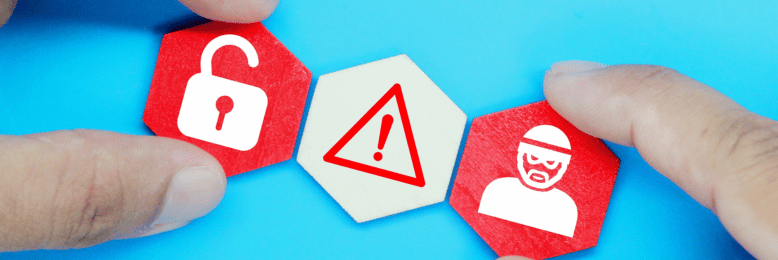How to Protect Your Business from Email Spoofing
April 23rd, 2024 | 4 min. read
%20-%202024-04-21T173222.654.jpg)
Imagine receiving an email from your parent/partner company asking you to send your company’s account number so they can wire you some funds. It seems legitimate; the email address does, too, so you send over the information. Unfortunately, you have just been a victim of an email spoofing attack. The sender wasn’t someone you know–it was a hacker trying to steal your information.
It’s a very dangerous scenario. Thankfully, it’s one that our team at Intelligent Technical Solutions (ITS) has helped businesses protect themselves from. In fact, we’ve been doing it for over two decades. In this article, we’ll share some tips you can use to protect your business from email spoofing attacks. To do that, we’ll dive into the following:
- What is Email Spoofing?
- What are the risks of falling victim to Email Spoofing?
- Ways to Protect Your Business from Email Spoofing
What is Email Spoofing?
Email spoofing is a technique used in spam and phishing attacks to trick you into thinking a message came from a person or entity you know or trust.
In these types of attacks, the sender forges email headers so that your email platform displays the fraudulent sender address, which most people take at face value. It’s hard to tell that the sender is forged because you need to inspect the header more closely. That’s because if it’s a name you recognize, you’re more likely to trust it.
Cybercriminals use this method because it increases the odds that you or a team member will click on malicious links, open malware attachments, send sensitive data, or even wire corporate funds.
What are the Risks of Falling for a Spoofing Attack?

Falling victim to a spoofing attack can pose various risks to your organization. Some of the key risks include:
1. Data Breaches
Spoofing attacks can result in unauthorized access to sensitive information, such as personal data, financial records, or intellectual property. This can lead to data breaches, compromising confidentiality and potentially causing financial losses or reputational damage.
2. Identity Theft
Attackers may use spoofing techniques to impersonate legitimate individuals or entities, such as employees, customers, or trusted organizations. This can lead to identity theft, where personal or confidential information is fraudulently obtained and used for malicious purposes, such as financial fraud or accessing sensitive systems.
3. Financial Fraud
Spoofing attacks can be used to deceive individuals in your organization into transferring funds or making financial transactions under false pretenses. For example, attackers may spoof the email addresses of trusted colleagues or vendors to trick recipients into wiring money to fraudulent accounts.
4. Malware Distribution
Spoofed emails or websites may contain malicious links or attachments designed to distribute malware, such as ransomware, spyware, or trojans. Once installed, malware can compromise system security, steal data, disrupt operations, or enable further attacks.
5. Phishing Scams
Spoofing attacks are commonly used in phishing scams, where attackers impersonate legitimate entities to trick individuals into divulging sensitive information, such as login credentials, passwords, or account numbers. This information can be used for identity theft, financial fraud, or unauthorized account access.
6. Reputation Damage
Falling victim to a spoofing attack can damage you or your organization’s reputation and trustworthiness. If customers, partners, or stakeholders are deceived by spoofed communications or fraudulent activities, it can undermine their confidence in you and lead to loss of business or opportunities.
7. Regulatory Compliance Violations
Depending on the nature of the spoofing attack and the data involved, your organization may be at risk of violating regulatory requirements related to data protection, privacy, and cybersecurity. This can result in legal consequences, financial penalties, or regulatory scrutiny.
11 Ways to Protect Your Business from a Spoofing Attack

There are different methods to spot and prevent spoofed emails from getting into your network environment. If you want to mitigate the risks associated with email spoofing for your business, consider implementing the following measures:
1. Implement SPF (Sender Policy Framework)
SPF is an email authentication method that helps prevent email spoofing. By publishing SPF records in your DNS (Domain Name System), you specify the authorized mail servers for your domain. Receivers can then verify the authenticity of incoming emails by checking the SPF records.
2. Use DKIM (DomainKeys Identified Mail)
DKIM adds a digital signature to outgoing emails, allowing the recipient to verify that an authorized sender sent the message and hasn't been tampered with in transit. Implement DKIM by generating public and private key pairs for your domain.
3. Enable DMARC (Domain-based Message Authentication, Reporting, and Conformance)
DMARC builds on SPF and DKIM to provide an additional layer of email authentication. It allows domain owners to specify how their emails should be handled if they fail SPF or DKIM checks. DMARC also enables reporting, giving you insights into email authentication failures.
4. Educate Employees about Phishing
Boost employee cybersecurity awareness by training them to recognize phishing attempts and suspicious emails. Emphasize the importance of verifying the sender's email address, avoiding clicking links or downloading attachments from unknown sources, and being cautious about providing sensitive information.
5. Implement Advanced Threat Protection (ATP) Solutions
Use advanced email security solutions incorporating threat intelligence and machine learning to identify and block email spoofing attempts. These solutions can analyze email patterns, sender behavior, and content to detect anomalies indicative of spoofed emails.
6. Apply Email Authentication Standards Consistently
Ensure all email domains associated with your business, including subdomains, have SPF, DKIM, and DMARC configured consistently. Inconsistencies can be exploited by attackers attempting to spoof your emails.
7. Monitor Email Authentication Reports
Review the reports generated by DMARC regularly to gain insights into email authentication results. Analyzing these reports can help you identify any unauthorized sources attempting to send emails on behalf of your domain.
8. Use Email Filtering Solutions
Implement email filtering solutions that can identify and block suspicious emails before they reach users' inboxes. These solutions often include anti-spoofing mechanisms and can enhance your overall email security posture.
9. Regularly Update and Patch Systems
Keep your email servers and related systems updated with the latest security patches. Attackers can exploit software vulnerabilities to gain unauthorized access and launch email spoofing attacks.
10. Implement Multi-Factor Authentication (MFA)
Enable multi-factor authentication for email accounts to add an extra layer of security. Even if credentials are compromised, MFA helps prevent unauthorized access by requiring additional authentication steps.
11. Validate External Emails
Implement policies to validate external emails that claim to be from within your organization. For example, use banners or tags in external emails to alert users when an email is from an external source, even if it appears to be internal.
By combining these measures, you can significantly reduce the risk of email spoofing and enhance the overall security of your business communications. Also, it’s crucial to regularly reassess and update your email security strategies to adapt to evolving threats.

Need Help Protecting Your Business from Email Spoofing Attacks?
Setting up safeguards against email spoofing is crucial to preventing social engineering and other malicious strategies employed by cybercriminals. By implementing the strategies we mentioned in this article, you can significantly reduce the risk of falling victim to spoofing attacks, helping protect your organization’s sensitive data, finances, and reputation.
If you need help putting safeguards in place, reach out to our experts at ITS and schedule a meeting. We have two decades of experience helping businesses bolster their security efforts. Or, if you want to learn more about how to secure your email further, check out the following resources:
Mark Sheldon Villanueva has over a decade of experience creating engaging content for companies based in Asia, Australia and North America. He has produced all manner of creative content for small local businesses and large multinational corporations that span a wide variety of industries. Mark also used to work as a content team leader for an award-winning digital marketing agency based in Singapore.
Topics:
